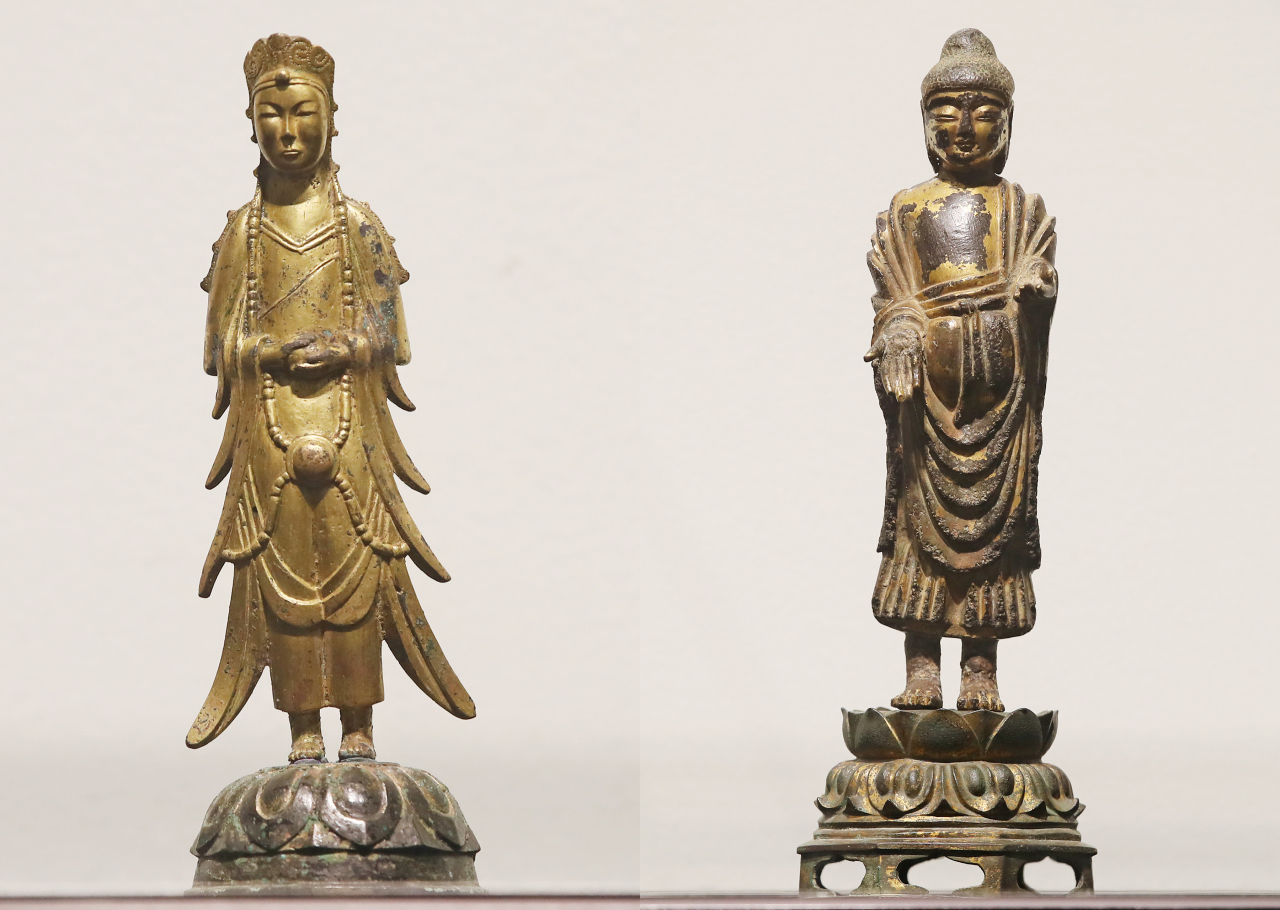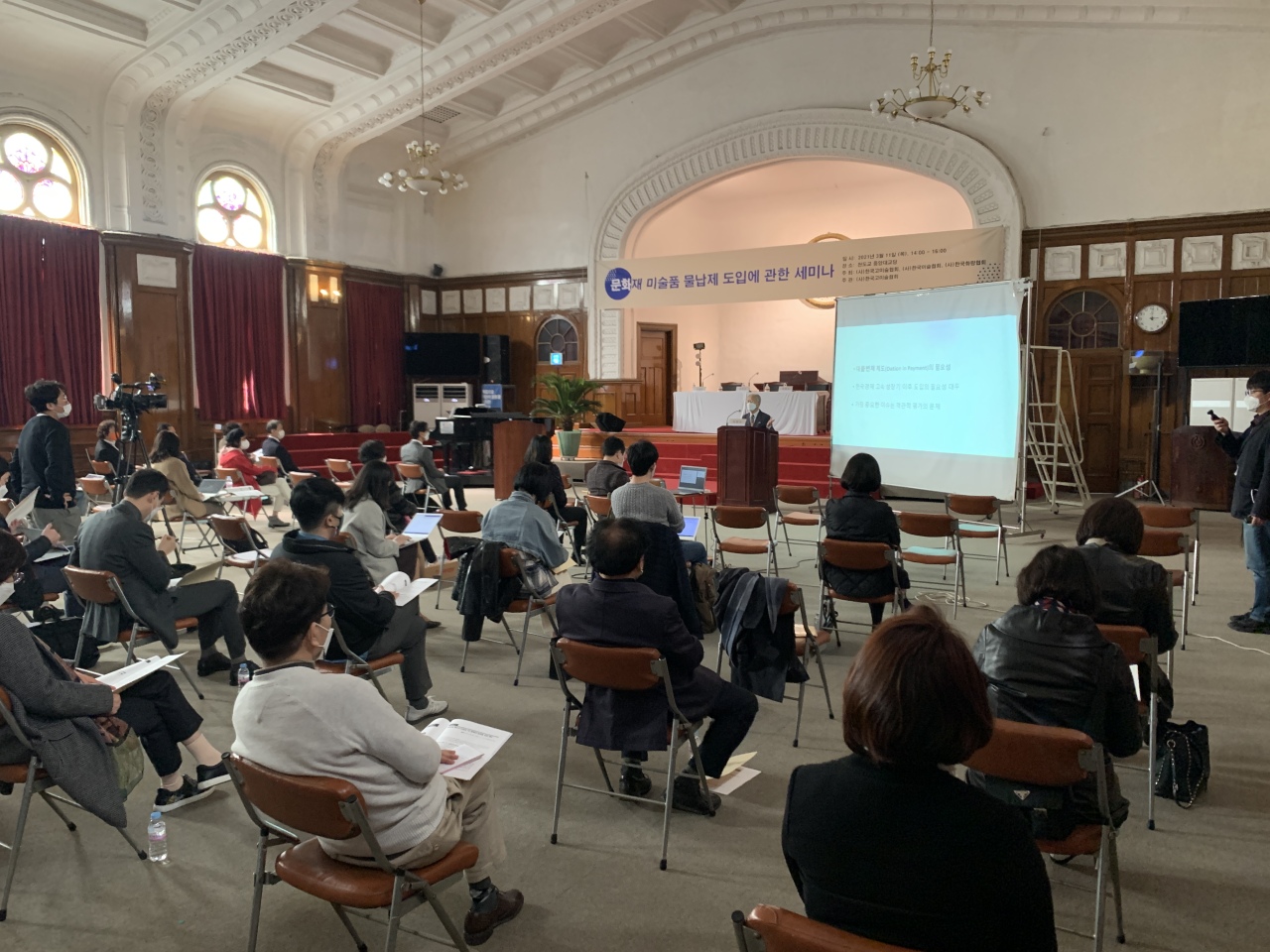Experts urge law change to let people pay inheritance tax with art
Demands to revise tax law to accept artworks as means of paying inheritance taxes have increased in past few months
By Park YunaPublished : March 14, 2021 - 18:25

A number of art experts and associations suggested revising the tax law to allow donations of artwork as a form of tax payment during a seminar held on Thursday at the Cheondogyo Central Temple in central Seoul.
Under the current law, only real estate and securities are recognized as alternative means of paying inheritance taxes.
“Korea has become a culturally advanced country, and the culture industry has the potential to play a central role in the future, even more so than the manufactural sector. Cultural assets have so much value. The time is ripe for discussing the tax issues related to art,” said Lee Kwang-soo, the president of the Korean Fine Arts Association at the seminar.

According to the Korean Fine Arts Association, around 50 percent of state-designated cultural assets in Korea, including national treasures, are owned by the private sector or individuals.
“Although Korea has seen growing cultural content over the past years, the art sector remains an industry that needs protection as the market is relatively small compared to other sectors such as publication and entertainment,” said Seo Jin-soo, professor at Kangnam University.
Korean art market transactions reached 420 billion won ($369.5 million) in 2018, according to Korea Arts Management Service’s latest statistics.
The need for discussion on this topic surfaced last year when the Kansong Art Museum put two state-designated treasures -- Treasure No. 284, Gilt-Bronze Standing Buddha and Treasure No. 285, Gilt-Bronze Standing Bodhisattva -- up for auction to raise funds amid financial difficulties that included inheritance taxes. The national treasures were purchased by the National Museum of Korea amid a public call to protect the state-designated treasures.
In November, a bill to revise the tax law was initiated by Rep. Lee Kwang-jae of the ruling Democratic Party of Korea.
Following the Kansong Art Museum issue, news about the late Samsung chairman Lee Kun-hee’s art collection being appraised fueled the discussion on art as a means to pay inheritance taxes, with speculation that some of the works could be sold at international auction houses to cover the Lee family’s inheritance taxes.
However, experts also raised concerns about revising the tax law without establishing a system or body that can fairly appraise an artwork‘s value.
“The problem we have here is that it is difficult to appraise artworks objectively. If we revised the law to accept the artworks instead of paying inheritance taxes, the most important question would be whether we have authoritative appraisal institutes that can conduct the appraisal objectively,” said Choe Byong-suh, honorary professor at Dongduk Women’s University. “What we need is to expand the appraisal manpower and secure qualified appraisal centers.”
In Korea, there are only a few private appraisal institutes, such as the Galleries Association of Korea’s Art Appraisal and Authentication Committee, the Korean Art Price Appraise Association and the Korea Art Authentication and Appraisal Research Center.
Regarding Lee’s collection, Choe added that, if the items are valuable as they are believed to be, the government authority and related art sectors need to have an in-depth discussion for the sake of the public‘s right to enjoy and benefit from culture.
“We need to actively discuss to keep the valuable collection in Korea for the future generations,” he said.
By Park Yuna (yunapark@heraldcorp.com)











![[Kim Seong-kon] Democracy and the future of South Korea](http://res.heraldm.com/phpwas/restmb_idxmake.php?idx=644&simg=/content/image/2024/04/16/20240416050802_0.jpg&u=)








![[Today’s K-pop] BTS pop-up event to come to Seoul](http://res.heraldm.com/phpwas/restmb_idxmake.php?idx=642&simg=/content/image/2024/04/17/20240417050734_0.jpg&u=)